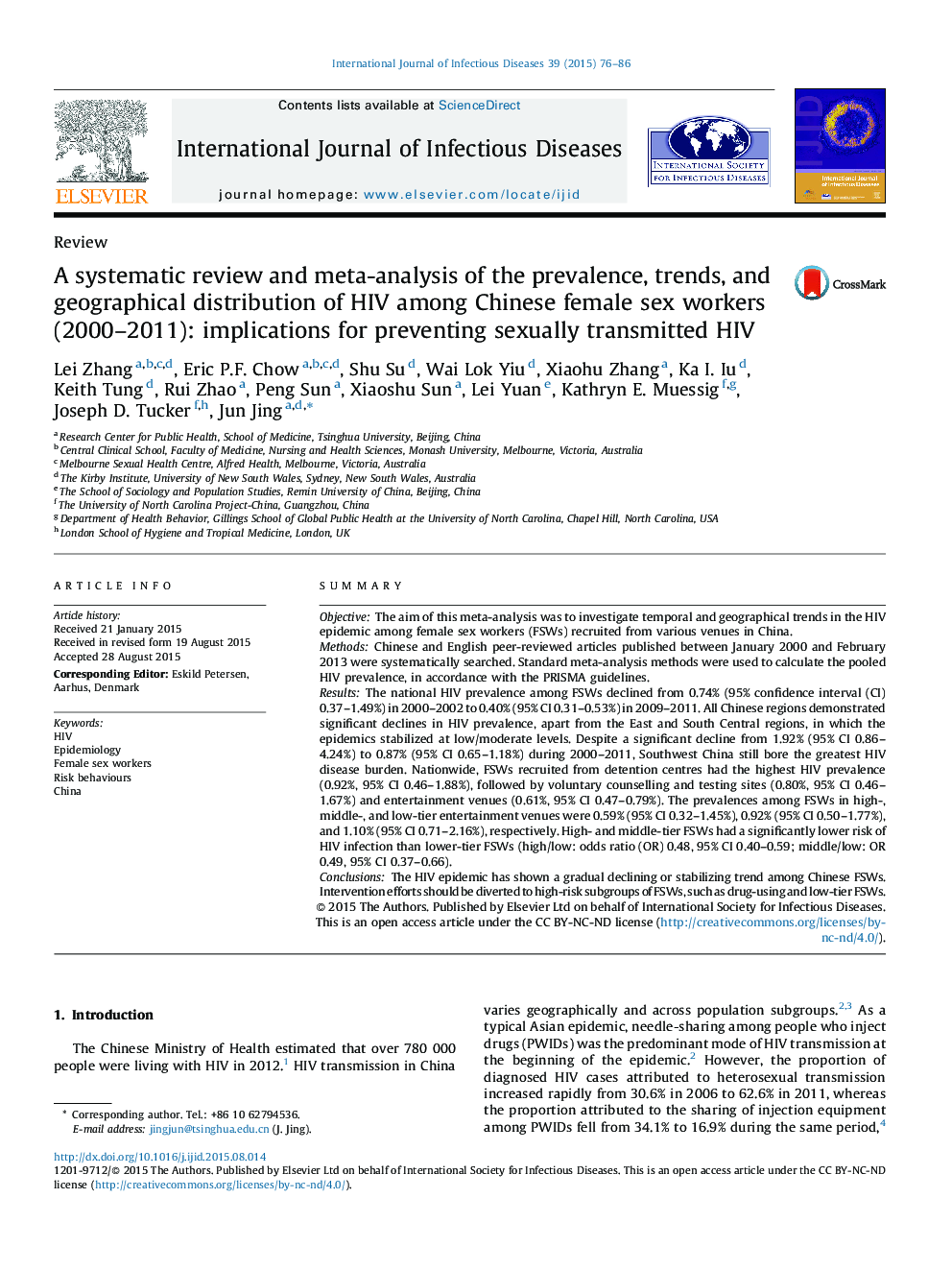| کد مقاله | کد نشریه | سال انتشار | مقاله انگلیسی | نسخه تمام متن |
|---|---|---|---|---|
| 3362016 | 1592056 | 2015 | 11 صفحه PDF | دانلود رایگان |

• The national HIV prevalence among female sex workers (FSWs) declined to 0.40% (0.31–0.53%) in 2011.
• Southwest China bore the greatest HIV prevalence compared to the other Chinese regions.
• FSWs recruited from detention centres had the highest HIV prevalence compared to those from other venues.
• FSWs working in low-tier entertainment venues are at a higher risk of HIV infection.
SummaryObjectiveThe aim of this meta-analysis was to investigate temporal and geographical trends in the HIV epidemic among female sex workers (FSWs) recruited from various venues in China.MethodsChinese and English peer-reviewed articles published between January 2000 and February 2013 were systematically searched. Standard meta-analysis methods were used to calculate the pooled HIV prevalence, in accordance with the PRISMA guidelines.ResultsThe national HIV prevalence among FSWs declined from 0.74% (95% confidence interval (CI) 0.37–1.49%) in 2000–2002 to 0.40% (95% CI 0.31–0.53%) in 2009–2011. All Chinese regions demonstrated significant declines in HIV prevalence, apart from the East and South Central regions, in which the epidemics stabilized at low/moderate levels. Despite a significant decline from 1.92% (95% CI 0.86–4.24%) to 0.87% (95% CI 0.65–1.18%) during 2000–2011, Southwest China still bore the greatest HIV disease burden. Nationwide, FSWs recruited from detention centres had the highest HIV prevalence (0.92%, 95% CI 0.46–1.88%), followed by voluntary counselling and testing sites (0.80%, 95% CI 0.46–1.67%) and entertainment venues (0.61%, 95% CI 0.47–0.79%). The prevalences among FSWs in high-, middle-, and low-tier entertainment venues were 0.59% (95% CI 0.32–1.45%), 0.92% (95% CI 0.50–1.77%), and 1.10% (95% CI 0.71–2.16%), respectively. High- and middle-tier FSWs had a significantly lower risk of HIV infection than lower-tier FSWs (high/low: odds ratio (OR) 0.48, 95% CI 0.40–0.59; middle/low: OR 0.49, 95% CI 0.37–0.66).ConclusionsThe HIV epidemic has shown a gradual declining or stabilizing trend among Chinese FSWs. Intervention efforts should be diverted to high-risk subgroups of FSWs, such as drug-using and low-tier FSWs.
Journal: International Journal of Infectious Diseases - Volume 39, October 2015, Pages 76–86